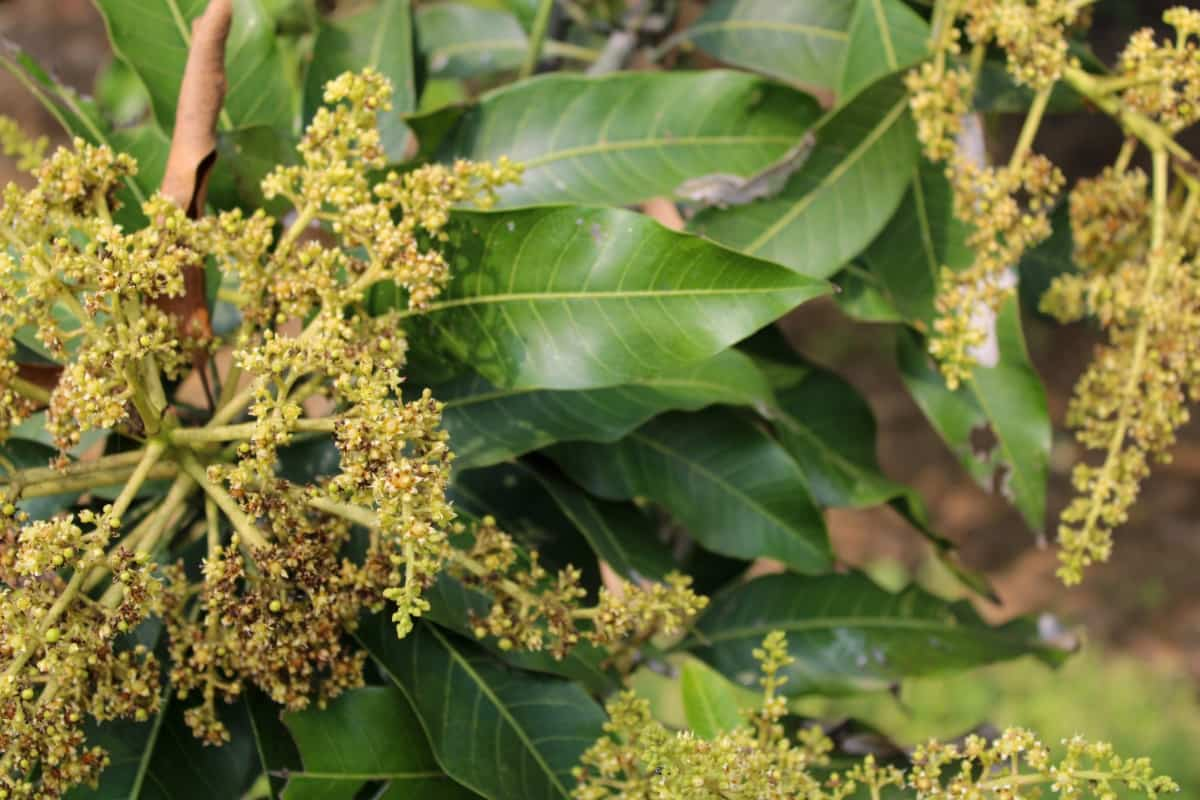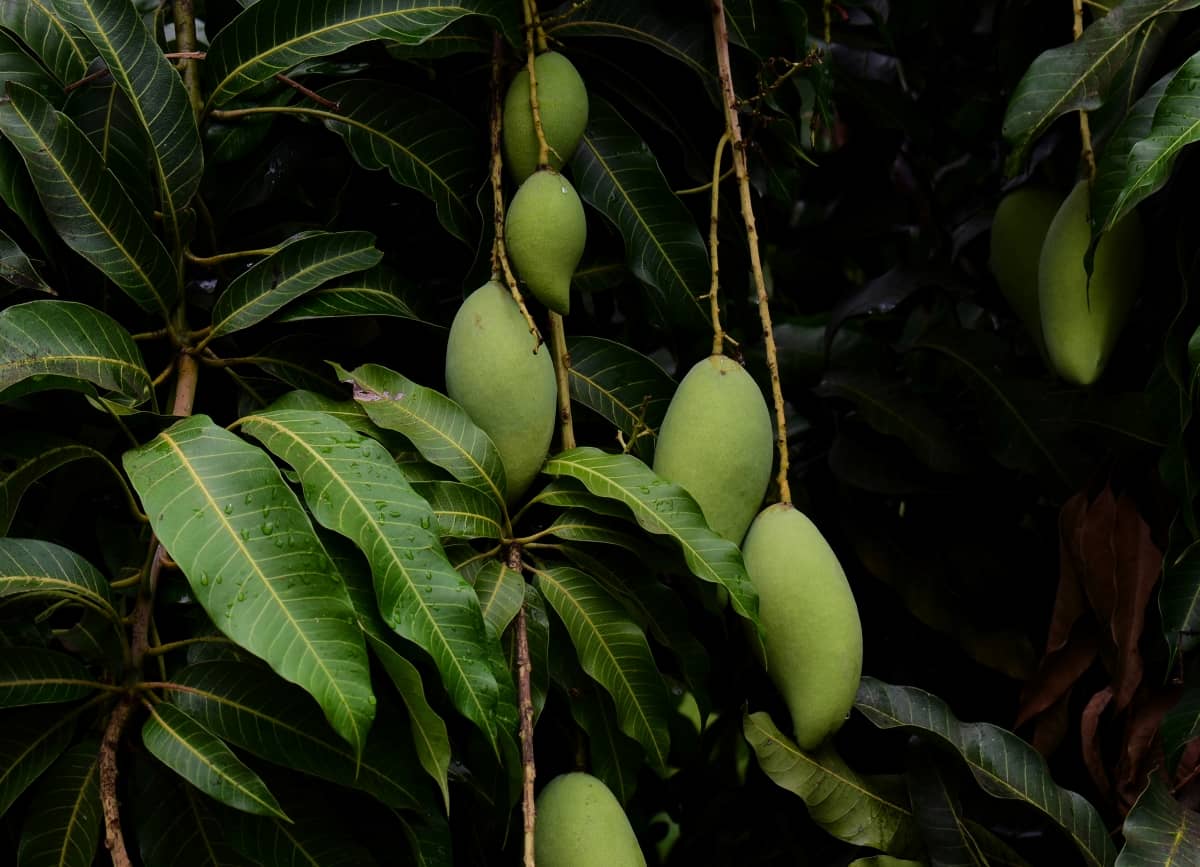Mallika Mango Farming: Discover the art of cultivating Mallika mangoes, a luscious and popular variety. Mallika mangoes are a delightful addition to any orchard with its aromatic flavor and vibrant color. Learn the secrets of successful cultivation, from planting to harvesting, and enjoy the bountiful rewards of this tropical fruit. Elevate your farming experience with Mallika mangoes.

Mallika Mango Farming
What is Mallika Mango Farming?
Mallika Mango Farming involves the cultivation of Mallika mangoes, a sought-after variety known for its exquisite taste and vibrant appeal. This farming practice encompasses techniques, including proper planting, nutrient management, pest control, and irrigation methods, to ensure optimal growth and fruit production. By adopting Mallika Mango Farming, farmers can unlock the potential for a profitable venture while indulging in the joy of nurturing and harvesting these flavorful tropical fruits.
Special Features of Mallika Mango
- Mallika Mango is a hybrid of Neelum and Dasheri Indian mango varieties.
- The fruit is exceptionally sweet and has gained popularity.
- Mallika Mango received a positive response at the Fairchild Botanic Gardens International Mango Festival.
- Mallika Mangoes are medium-sized and oval-shaped, weighing between 10 and 20 ounces each.
- They have yellow to yellow-pink skin.
- The skin color changes to a reddish-yellow hue within three days after harvesting.
- This color transformation occurs due to increased carotenoid content and degradation of chlorophylls in the skin.
Pits Preparation for Mallika Mango
- Prepare the pits for Mallika Mango farming by selecting a suitable location with well-drained soil and ample sunlight.
- Dig pits of size approximately 3 feet deep and 3 feet wide.
- Improve soil fertility by incorporating organic matter such as compost, well-rotted manure, or FYM into the pits during preparation.FYM into the pit to improve soil fertility.
- Allow the pits to settle for a few weeks before planting the Mallika Mango saplings.
- Ensure proper spacing between pits to allow for adequate airflow and sunlight penetration.
Plantation of Mallika Mango Trees
- Selection of healthy saplings: Select healthy saplings for planting, preferably one-year-old grafts, from reliable sources. Plant this straight-growing, healthy saplings at the center of the prepared pits.
- Plants Per Acre: In high-density mango farming, a single acre accommodates 100 mango saplings, significantly higher than the 40 saplings planted in traditional agriculture.
- Age of the plant when planted: Mallika Mangoes typically mature within 4 to 5 months after Flowering. Grafted mango trees are usually productive for 40-50 years, after which the yield gradually decreases.
- Support and stacking of plants: In Mallika Mango farming, plants are supported and stacked using appropriate methods to ensure proper growth and prevent breakage, maximizing space utilization and facilitating easier maintenance.
Drip Irrigation/ Water Management in Mallika Mango
- Drip irrigation is an efficient water management technique used in Mallika Mango farming.
- It provides water directly to the root zone, reducing water wastage and ensuring optimal water utilization.
- Typical water requirements for Mallika Mango trees range from 25 to 50 liters per day during the initial years, gradually increasing to 50 to 100 liters per day in subsequent years.
- Irrigation scheduling should consider soil moisture levels, weather conditions, and tree growth stages to prevent under or overwatering.
- Monitoring soil moisture and adjusting irrigation schedules is crucial for maintaining healthy Mallika Mango trees.
In case you missed it: Langra Mango Farming: A Comprehensive Guide to Planting, Pruning, Care, and Harvest

Compost/Fertilizers Application Stages
- Pre-planting: Incorporate organic matter like compost or well-rotted manure into the pit.
- Early growth: Apply a balanced fertilizer to promote healthy root development.
- Fruit development: Provide a potassium-rich fertilizer to support fruit growth and enhance sweetness.
- Maintenance: Regularly apply a balanced fertilizer to maintain tree health and productivity.
Pruning Stages/Season for Mallika Mango
- Formative pruning: During the early years, prune to shape the tree and establish a well-balanced framework of branches.
- Winter pruning: In the dormant season, remove dead, diseased, or crossing branches to improve airflow and light penetration.
- Post-harvest pruning: After fruiting, prune to remove excess growth and maintain an open canopy.
- Maintenance pruning: Regularly remove water sprouts and thin crowded branches to promote healthy development and fruit production.
Flowering Stages for Mallika Mango
Time of flowering: Mallika mangoes crossbreed Neelum and Dasheri mango varieties. Harvesting of the fruit typically takes place from June to July 1. However, the flowering period varies based on climate and location, usually between December and March.
Factors affecting flowering: Mango flowering and fruit setting are influenced by several factors, including mango variety, tree age, climate, water availability, and nutrient levels. Environmental conditions like temperature and humidity play a significant role in the flowering process, along with nutritional and hormonal factors impacting successful Flowering in mango trees.
Importance of flowering: Flowering in mango marks the beginning of fruit production and is a complex process involving the balance between vegetative and reproductive growth. The climatic conditions play a crucial role in the development and Flowering of mango trees, contributing to the overall success of the flowering event.
Pollination techniques: Mango propagation can be achieved through seeds or vegetative methods like veneer grafting, inarching, and epicotyl grafting. Insect pollinators such as bees and flies play a crucial role in the pollination process. The effectiveness of pollinators can be assessed by comparing fruit set outcomes resulting from various pollination treatments applied to the flowers.
Pests and Diseases Management in Mallika Mango
Pests
- Mango fruit fly (Bactrocera dorsalis)
- Mango hoppers (Idioscopus spp.)
- Mango shoot caterpillar (Penicillaria jocosatrix)
- Mealybugs (Drosicha mangiferae)
Diseases
- Anthracnose (Colletotrichum gloeosporioides)
- Powdery mildew (Oidium mangiferae)
- Mango malformation disease (Fusarium mangiferae)
Management Practices
- Timely application of insecticides and pesticides.
- Pruning infected branches and fruits.
- Maintaining proper sanitation in orchards.
- Using resistant mango varieties.
- Monitoring and early detection to prevent severe infestations and infections.
Harvesting Time and Yield of Mallika Mango
The harvesting period for Mallika mangoes typically falls between June and July 1. The yield of mangoes varies significantly based on a region’s variety and agro-climatic conditions. On average, the yield ranges from 5 to 9 tons per acre.
In case you missed it: Himayat Mango Farming: A Comprehensive Guide to Planting, Pruning, Care, and Harvest

Conclusion
Mallika Mango Farming offers a rewarding venture for farmers. With its delightful taste, vibrant color, and high yield potential, Mallika mangoes are a sought-after variety in the market. By implementing proper techniques such as pit preparation, water management, pruning, and pest control, farmers can optimize their orchard productivity. Embracing Mallika Mango Farming provides a pathway to success in the mango industry while indulging in the beauty of this tropical fruit.
- Ultimate Guide to Ossabaw Island Hog: Breeding, Raising, Diet, and Care
- Ultimate Guide to Juliana Pig: Raising Facts, Size, Diet, Care, and Lifespan
- Raising Lleyn Sheep: Disadvantages, Price, Uses, Characteristics, and Care
- Ultimate Guide to Meishan Pig: Breed Facts, Breeding, Raising, and Care
- Ultimate Guide to Teacup Pigs: Raising, Diet, Lifespan, Cost, and Care
- Guide to Raising Poll Dorset Sheep: Facts, Profile, Characteristics, Uses, and Care
- Ultimate Guide to Bighorn Sheep: Characteristics, Diet, Lifespan, Breeding, and Lifecycle
- Ultimate Guide to Raising Katahdin Sheep: Farming Facts, Breed Profile, Uses, and Care
- Ultimate Guide to Raising Oreo Cows: Belted Galloways Farming Facts, Profile, Uses, and Care